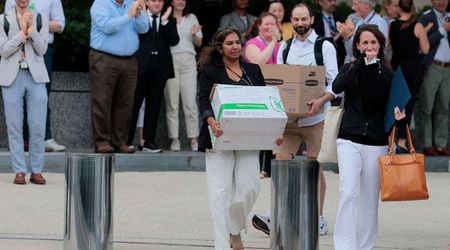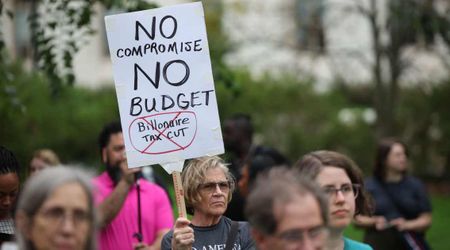As Supreme Court Blocks Student Loan Forgiveness, Here's What Borrowers Can Do

The Supreme Court dealt a blow to President Joe Biden's student loan forgiveness plan, on Friday, June 30, ruling that it exceeded the Education Secretary's authority. This decision has left around 40 million student loan borrowers in a state of uncertainty, as they were hoping for relief from their mounting debt.
The federal student loan payments were stopped in March 2020 during the pandemic. While the path to complete forgiveness has been blocked, there are still alternative options available to borrowers.
Supreme Court Spoils Biden's Party
With this student loan forgiveness, the Biden administration aimed to provide relief of up to $20,000 to eligible borrowers. The court held that the Education Secretary does not have the authority to rewrite existing statutes, emphasizing the need for clear congressional authorization for major economic or political decisions. But President Biden remains undeterred and said that he will try another loan forgiveness program under the Higher Education Act. The 1965 law allows the secretary of education to “compromise, waive or release any right, title, claim, lien or demand, however acquired, including any equity or any right of redemption.”
During his 2020 election campaign, Joe Biden had pledged that he would forgive up to $10,000 of federal student loans. Biden trying to get reelected for a second term announced in August 2022 that those eligible Federal borrowers earning less than $125,000 annually would get a relief of up to $10,000. Those students who had qualified for Pell Grant would get an additional $10,000, said Biden. Around 40 million Americans were eligible. Had the Biden administration gotten its way and released $430 billion, it would have been the most expensive executive action in U.S. history.

Types of Student Loans: Federal vs. Private
Even though the Supreme Court ruling concerns borrowers of Federal loans, there are a large number of students who have borrowed from private institutions. It is important for borrowers to understand the distinction between federal and private student loans. Federal loans, which were the focus of the forgiveness plan, are provided by the government and were eligible for potential forgiveness. On the other hand, private loans are provided by private lenders and do not qualify for federal forgiveness programs.

Refinancing Private Student Loans for Lower Interest Rates
Borrowers with private student loans should consider refinancing options to reduce costs and lower their interest rates. Federal borrowers would lose certain benefits if they refinance and the exercise is cumbersome. Refinancing allows private borrowers to secure a more favorable interest rate and potentially save money over the life of the loan. Additionally, refinancing provides the opportunity to change repayment terms or switch to a different lender for improved benefits.

Also, refinancing private student loans offers several advantages beyond lower interest rates. Borrowers can modify their repayment terms to make them more manageable, consolidate multiple loans into a single payment, or extend the repayment schedule to reduce monthly payments. Switching to a different lender may also provide better terms, perks, and customer service.

Key Considerations Regarding Private Student Loans
While private student loans may not provide the same advantages as federal loans, they can still be a viable alternative for individuals seeking additional funds to cover their educational expenses. Private loans often feature higher borrowing limits, which can help close the financial shortfall resulting from limited federal loan support. Moreover, private loans generally offer faster approval processes, making them a suitable option for those in need of last-minute financing.
Exploring Other Options for Student Loan Relief
Apart from federal forgiveness programs, there are alternative avenues for student loan relief. Borrowers should keep their payments on hold using forbearance or request an economic hardship or unemployment deferment if necessary. Exploring alternate repayment plans, such as income-driven repayment options, can make monthly payments more affordable. Furthermore, borrowers should investigate lesser-known forgiveness programs tailored to specific professions or public service work.
Public Service Loan Forgiveness
Despite recent improvements, the Public Service Loan Forgiveness program remains open to borrowers employed in government or eligible nonprofit organizations. To qualify, borrowers must make 120 qualifying payments while working in a qualifying position. Additionally, there are several other forgiveness programs designed for specific professions, such as teachers or nurses, which offer relief based on specific criteria.
Refinancing private loans, considering different repayment plans, and exploring forgiveness programs can provide relief and help borrowers regain control of their financial futures. Understanding the available avenues and making informed decisions will empower individuals to navigate the student loan landscape more effectively.






















